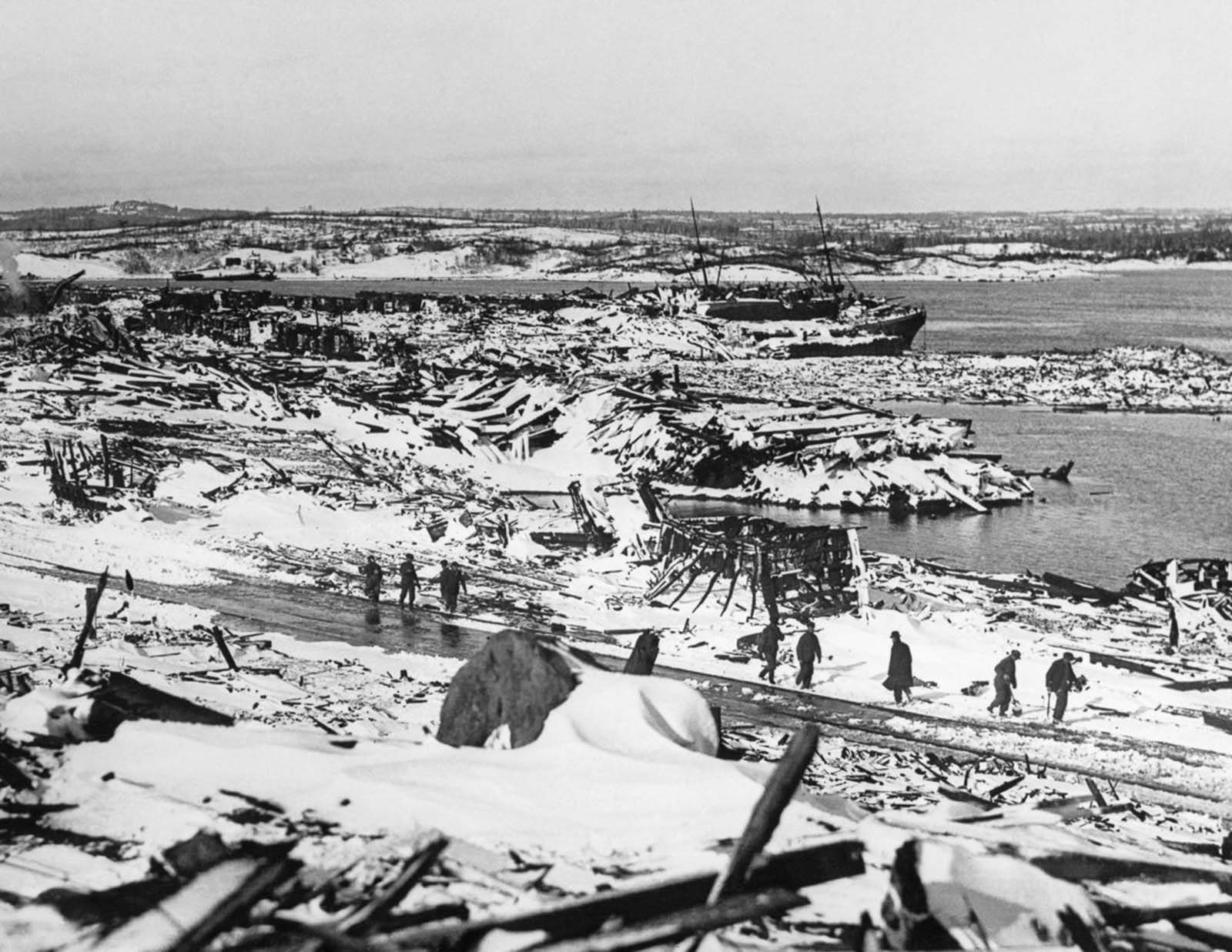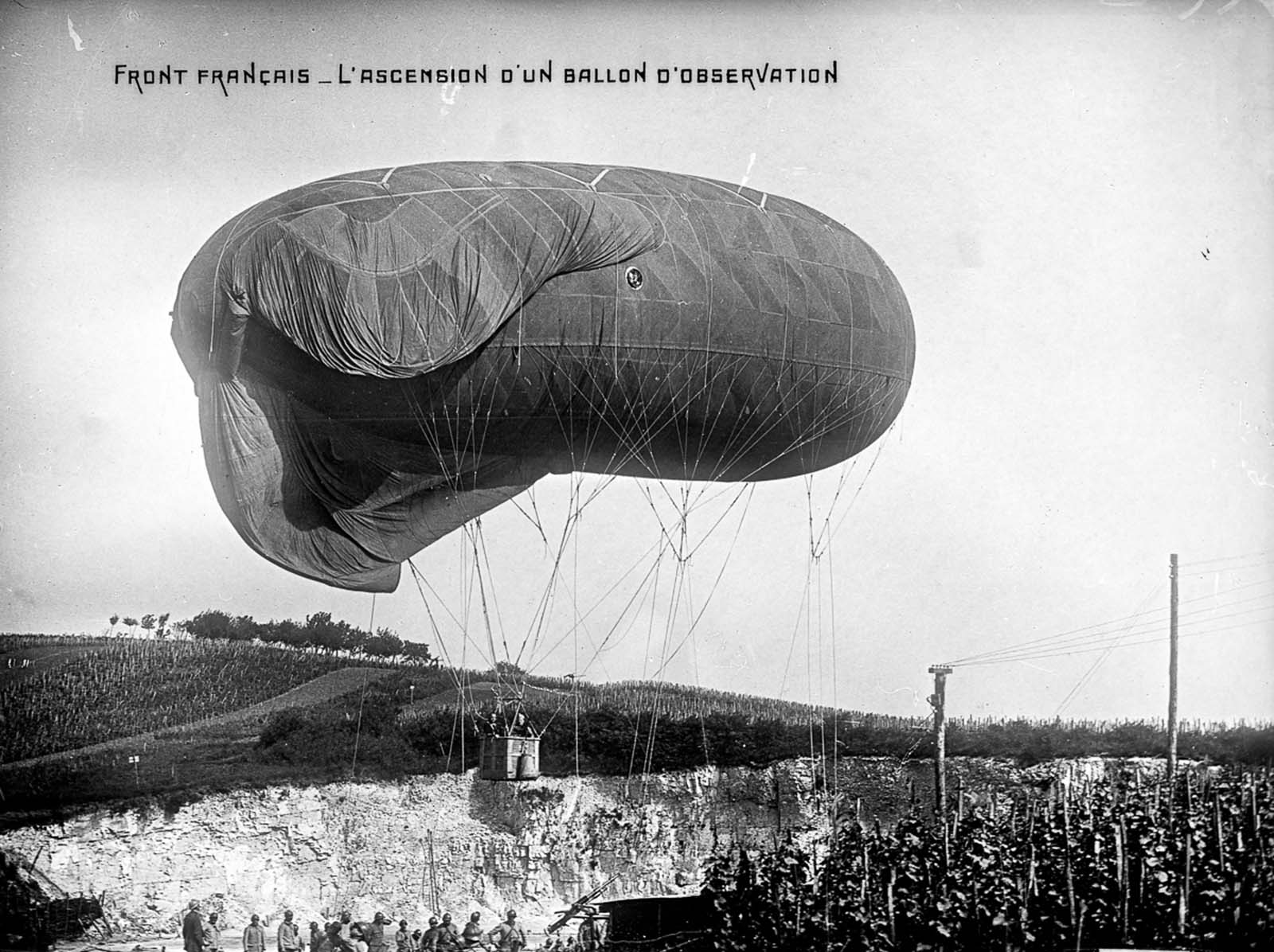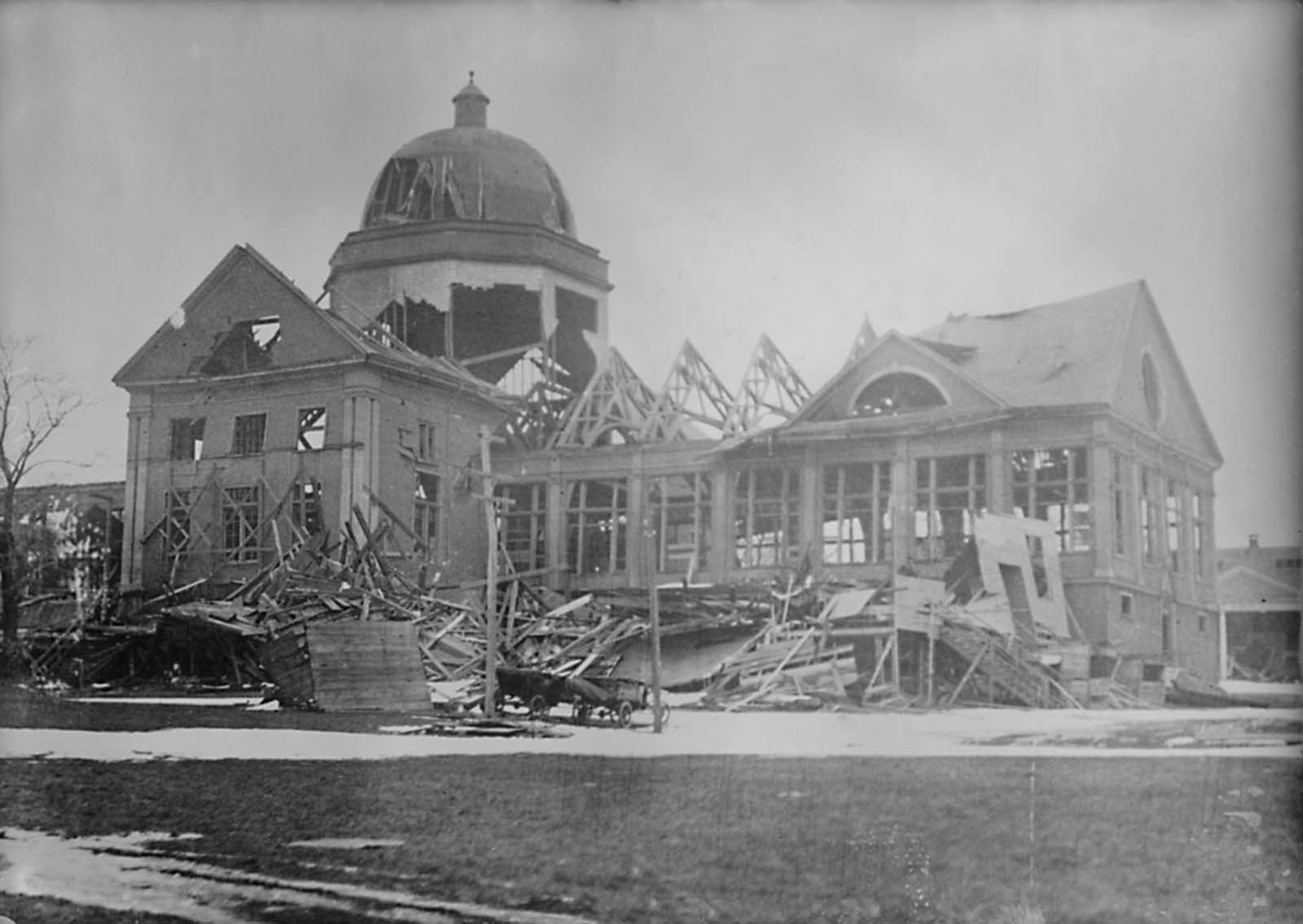
The blast was heard around the world. While it wasn’t uncommon for accidents to happen during the war, this made the headlines worldwide.
When the two ships clashed in the harbour of the port city of Halifax, Nova Scotia, on 6th December 1917, the news made headlines as it was not something usual that followed.
The ships that clashed were the Norwegian war-relief ship, the SS Imo, and the SS Mont-Blanc, a rusting French tramp steamer loaded with gunwales with high explosives.to 3,000 tons of picric acid, TNT, and gun cotton, and piled on her deck were hundreds of barrels of high-octane benzol fuel.
The SS Mont-Blanc was a time bomb due to all it carried. A veteran Royal Navy officer said, “I’m surprised that people on the ship didn’t leave in a body when they saw the nature of the cargo she had been ordered to carry”.
RELATED: USS Galena, A Federal Ironclad Displaying Minor Battle Damage, 1862
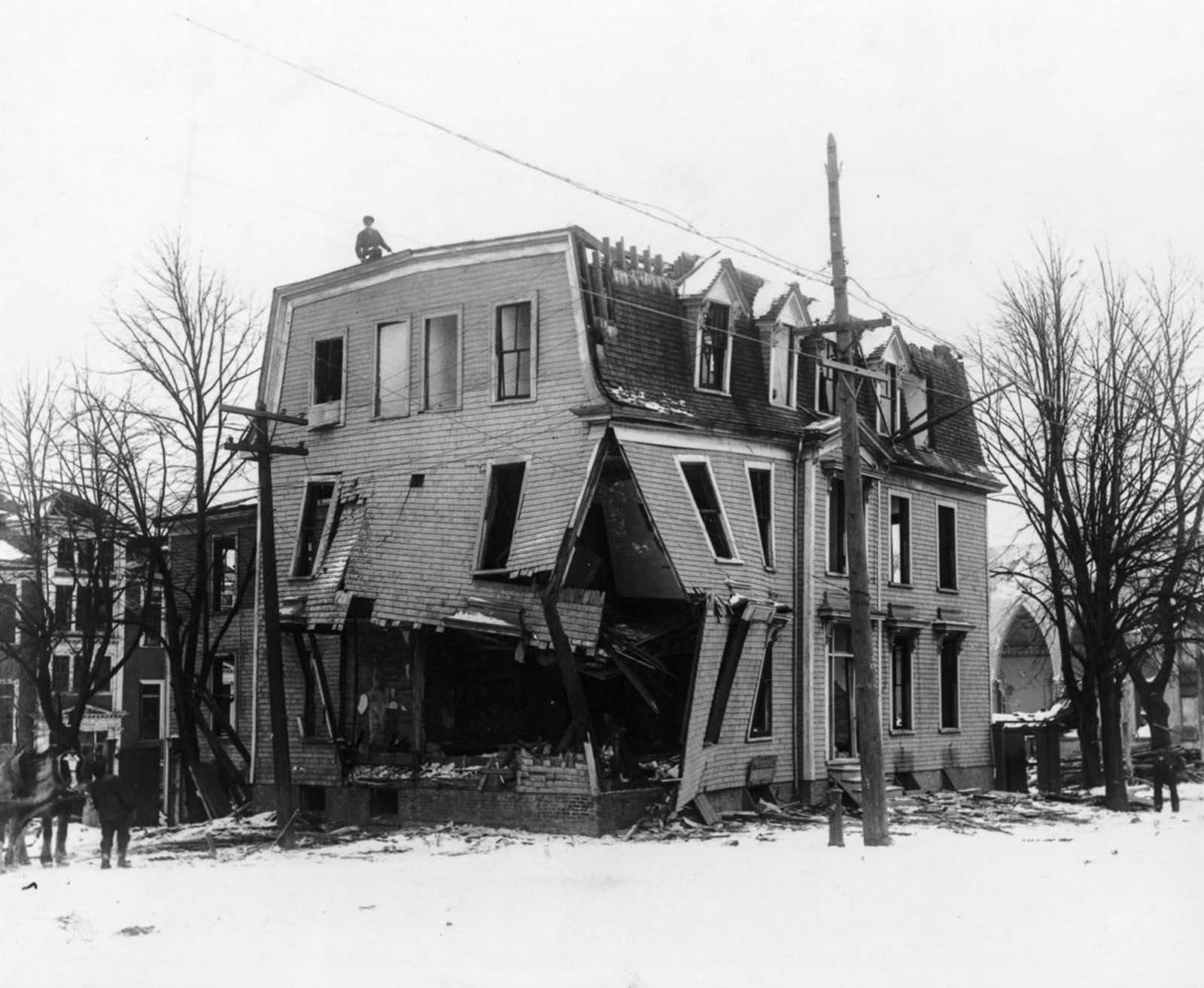
The circumstances that led to the collision were bizarre as they defied logic. The weather was seemingly perfect, the sea was calm, and the two ships’ captains were very experienced sailors.
The Norwegian ship had come carrying relief goods for Belgium. On 3rd December, it arrived in Halifax for the inspection and refuelling supplies. By 5th December, she had been cleared to leave, but her collections delayed her.
That day, the SS Mont-Blanc came in from New York. As a result of the war restrictions, she could not enter the harbour when it was late. Ships that carried dangerous cargo were not allowed into the harbour before the war. The ships had a speed restriction within the harbour.
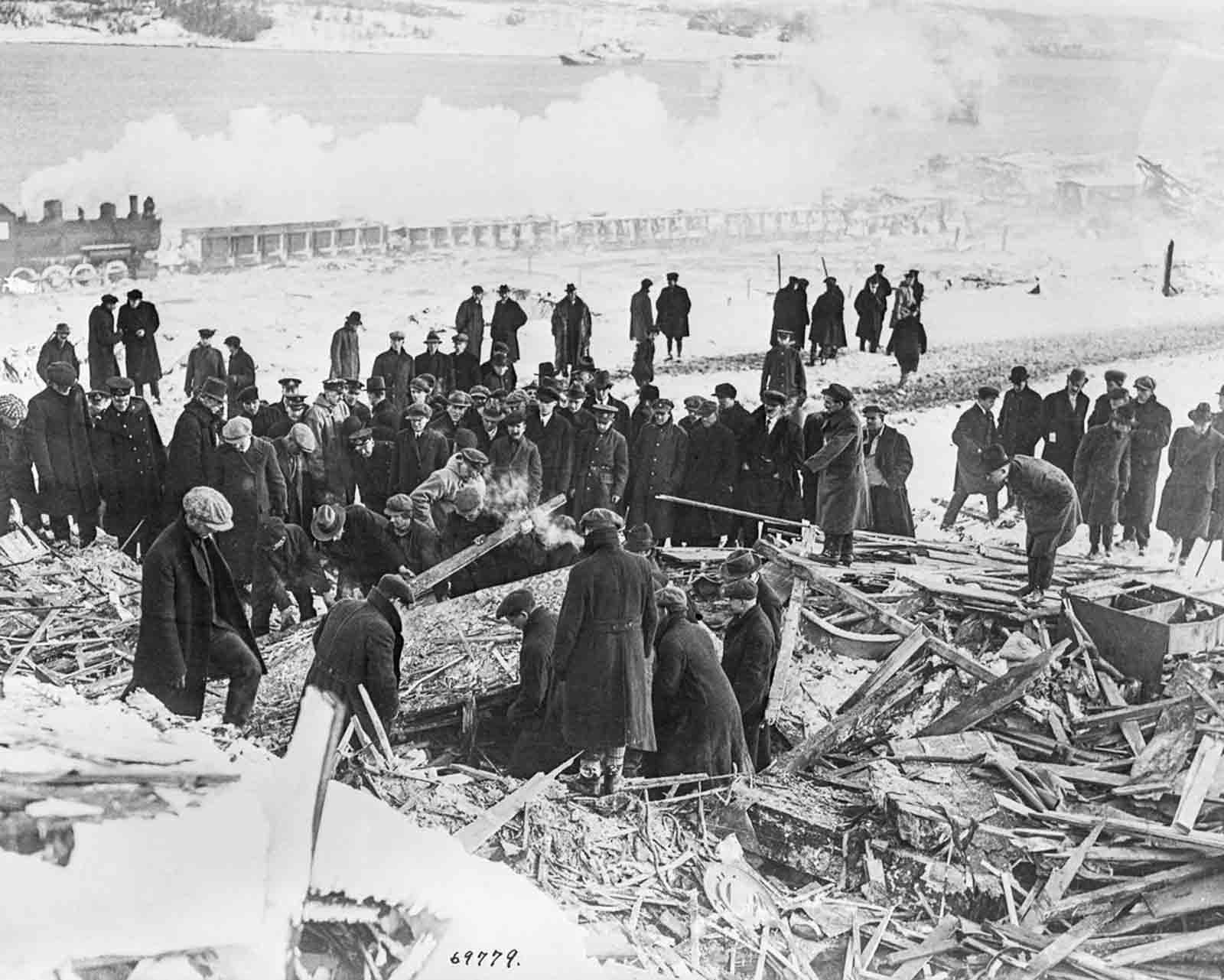
Some minutes before 9:00 in the morning, the SS Imo realized that they were on a collision course with the Mont-Blanc. However, despite exchanging warning signals and stopping their engines, their momentum kept the ships moving toward each other at a slow speed.
Despite the attempts to stop the collision, it occurred at 8:45 am. A fire started due to the explosives Mont-Blanc carried, so the captain asked the members to abandon the ship.
They attempted to warn members of the other ships that an explosion was about to happen, but they couldn’t be heard over the noise.
When the explosion occurred, it was felt for over 207 kilometres, and more than 160 hectares were destroyed. A tsunami happened as a result of the blast.
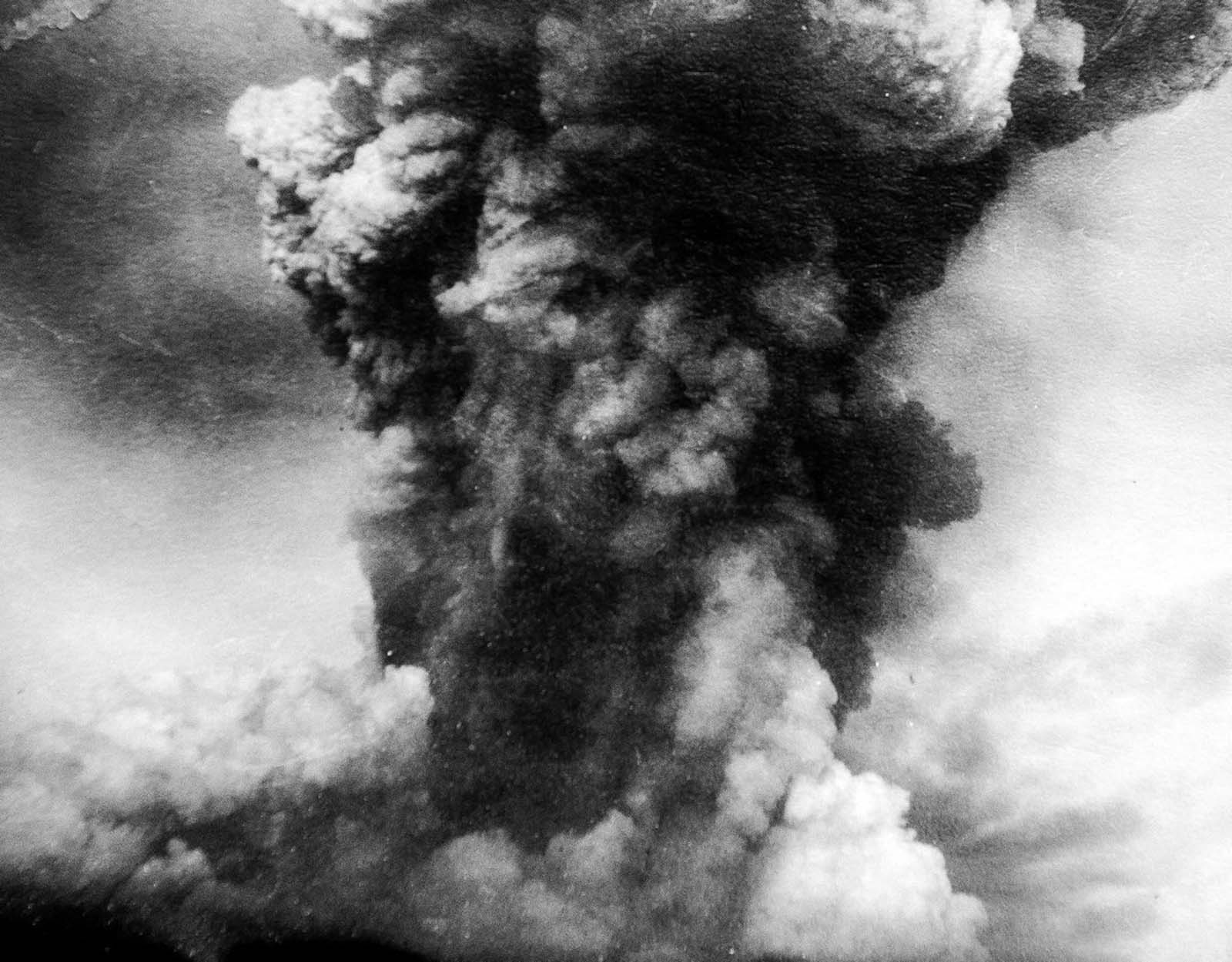
More than 1,600 people died instantly; 9,000 were injured; over 300 died. Every building within a 2.6-kilometre radius, over 12,000 in total, was destroyed or badly damaged. Most people watching from their homes ended up blind from the blast wave.
The only surviving member of the eight-man crew of the fire engine Patricia, Firefighter Billy Wells, was thrown away from the explosion and had his clothes torn from his body. He described the explosion: “The sight was awful, with people hanging out of windows dead. Some with their heads missing, and some thrown onto the overhead telegraph wires.”
The Halifax Explosion remains one of the enormous artificial non-nuclear explosions.
RELATED: USS Galena, A Federal Ironclad Displaying Minor Battle Damage, 1862
